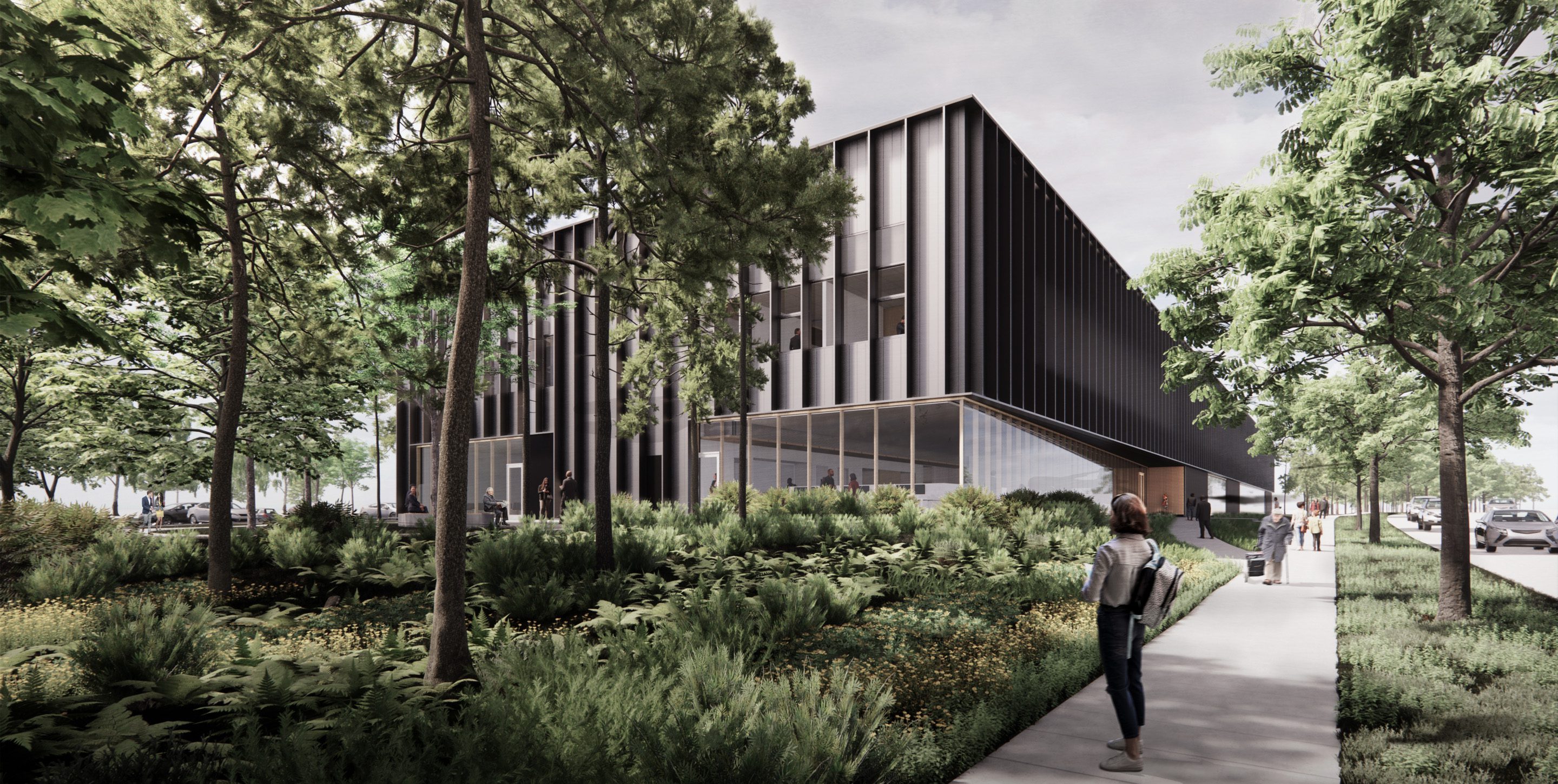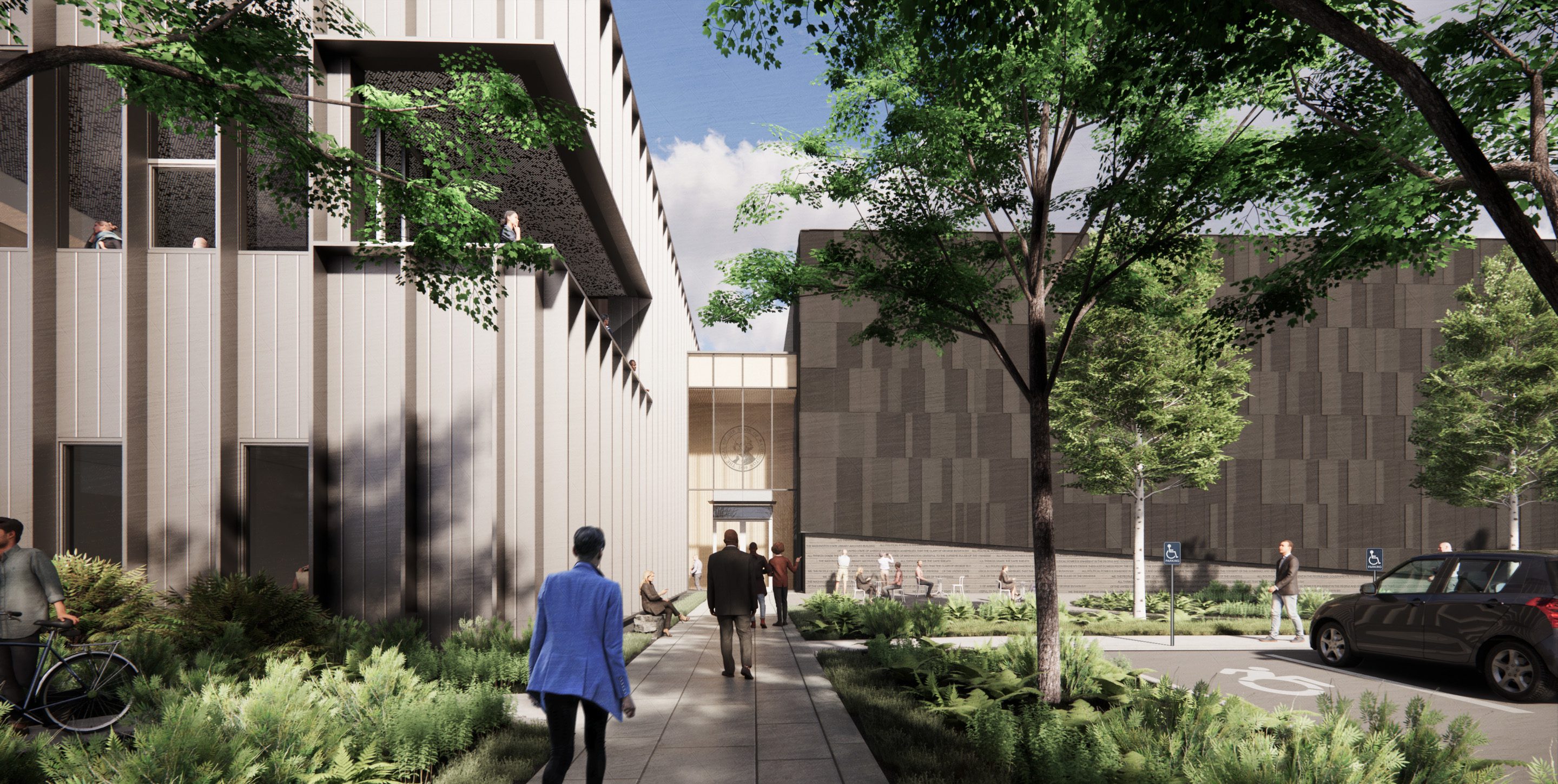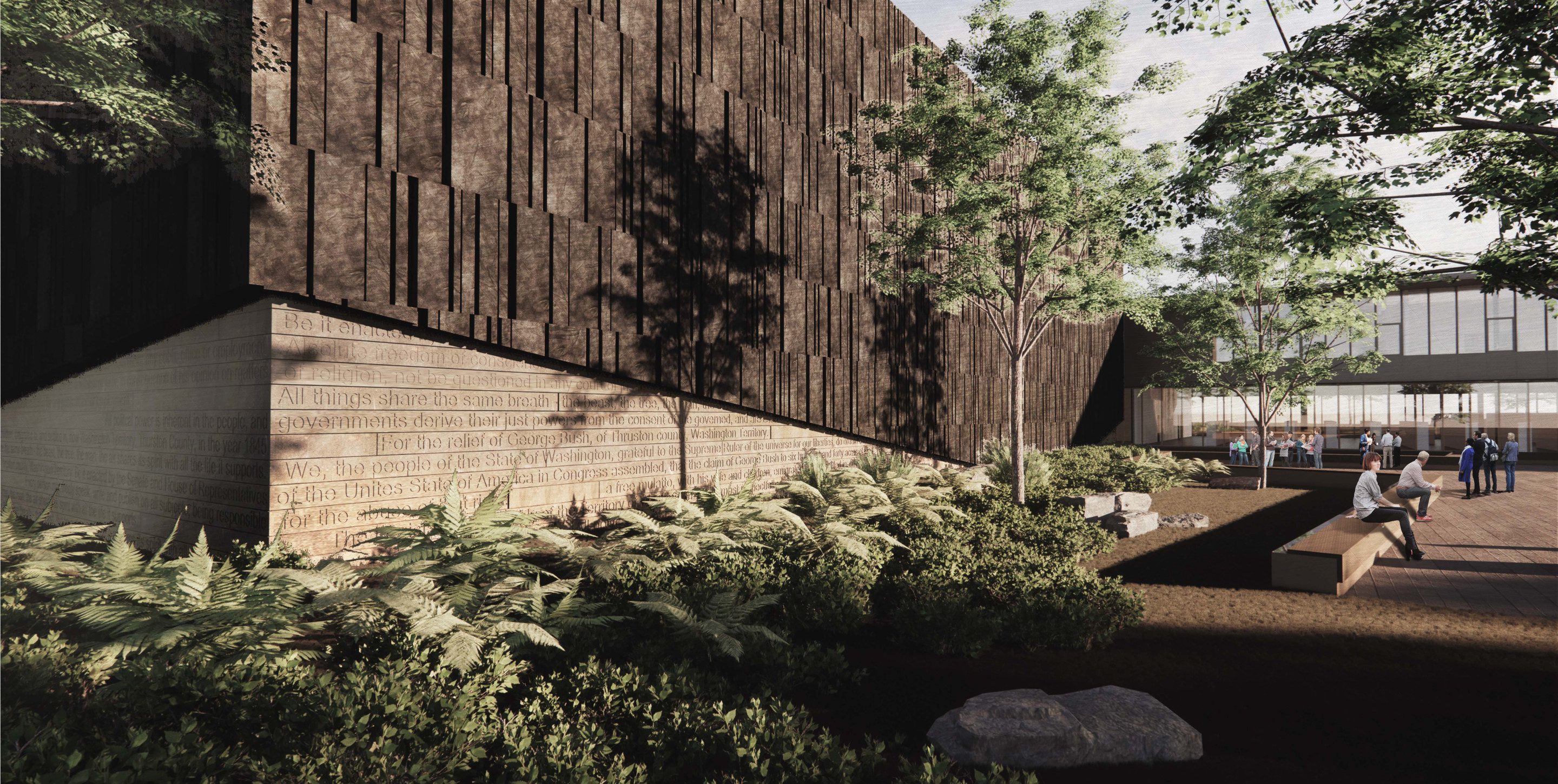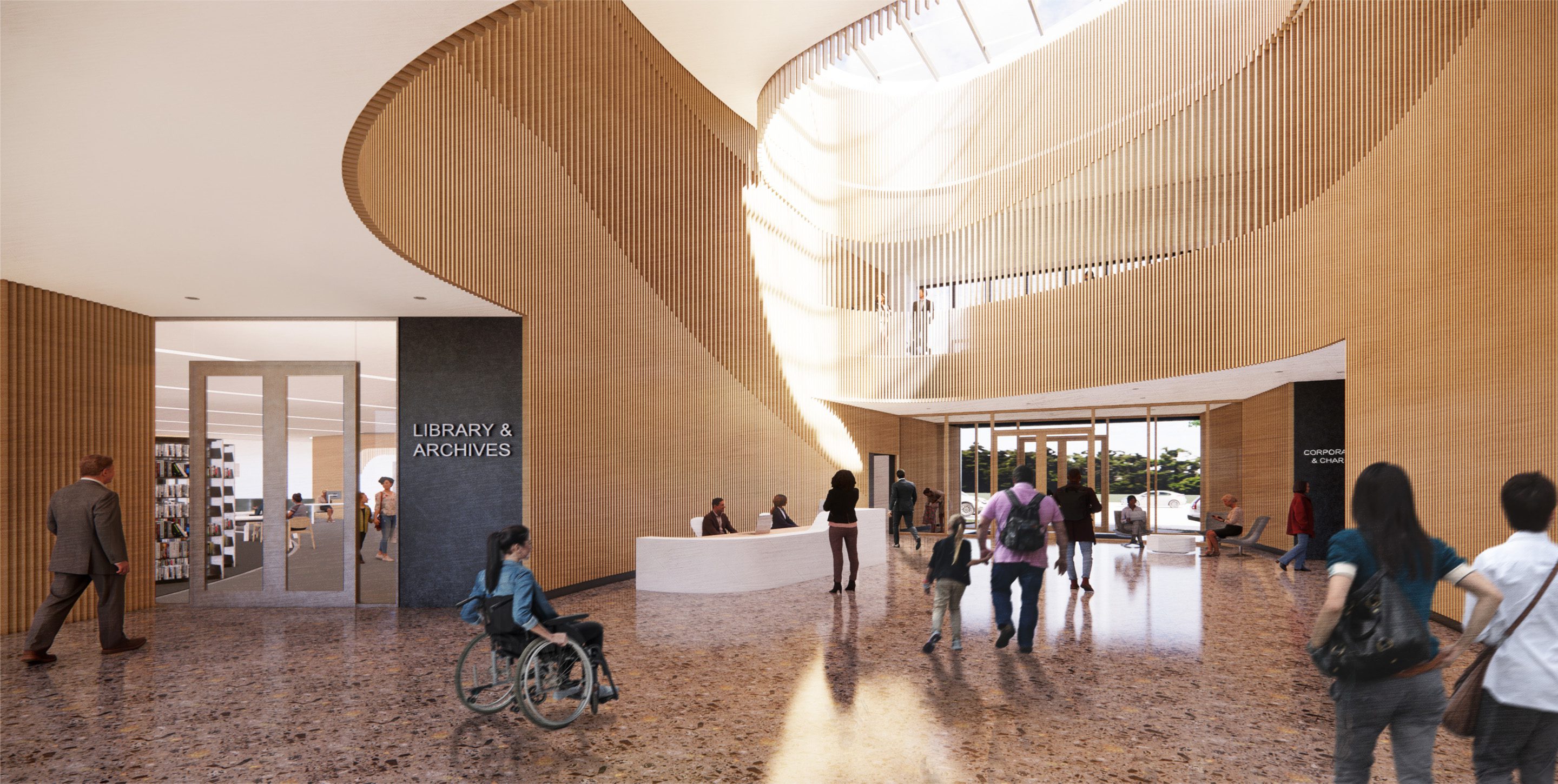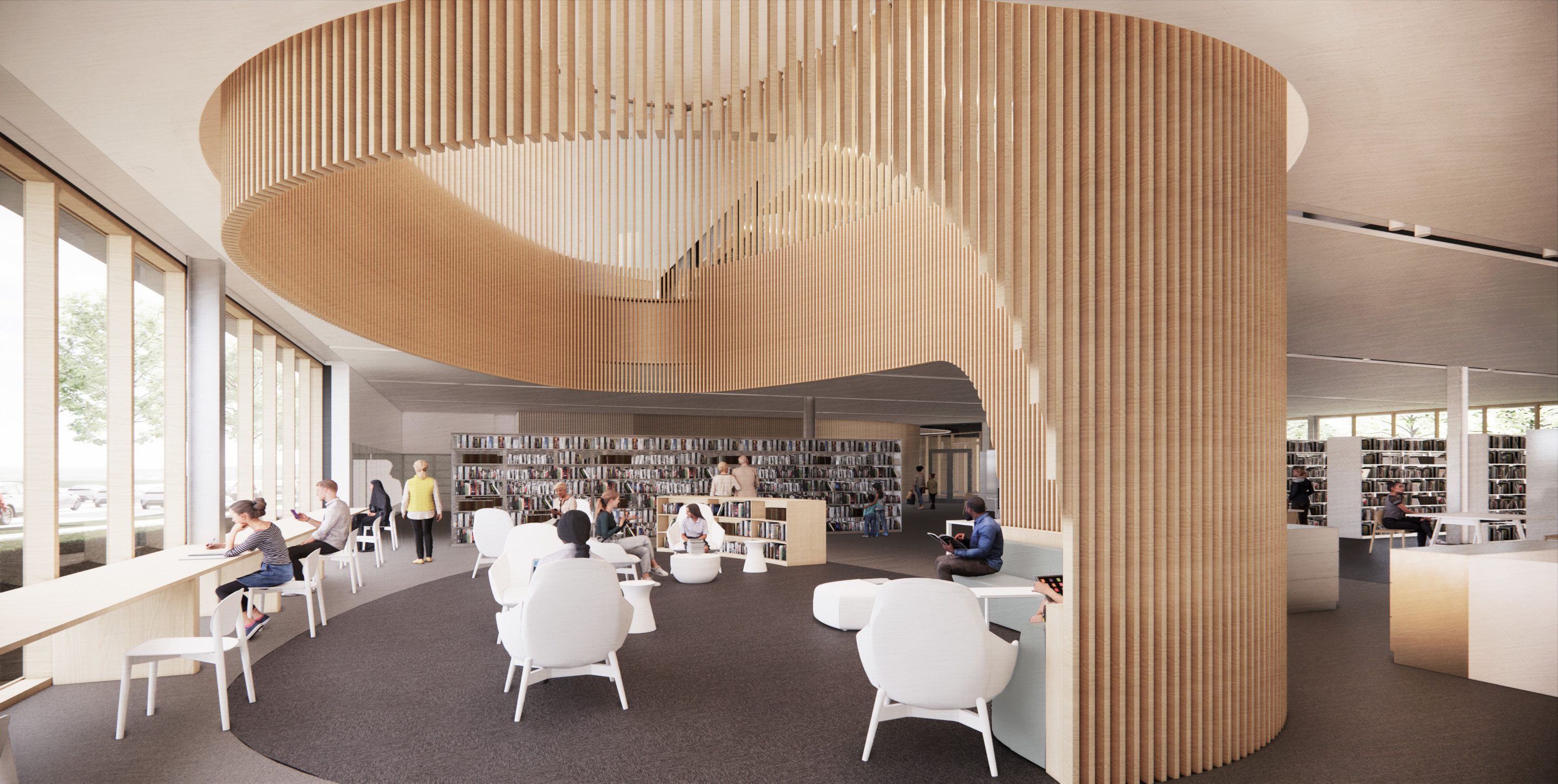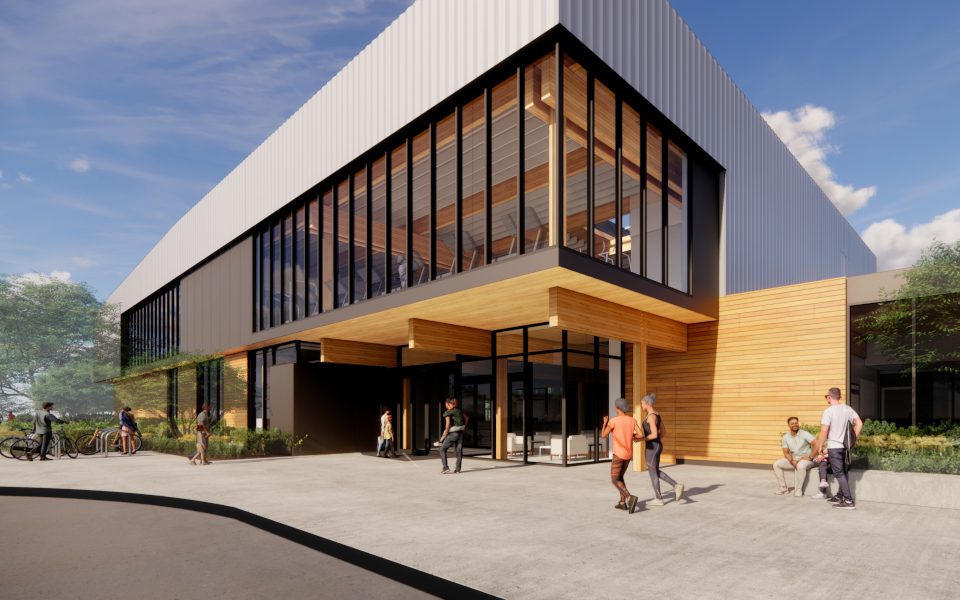Washington State Library Archives Building
Designed as a replacement for the aging Washington State archival storage facility, the new Library Archives Building will be a state-of-the-art office and storage complex that houses the entire State archival collection of historic and record documents, along with the staff that manages and maintains it.
Conceived as two distinct but interconnected volumes by architect Miller Hull, each building serves a unique function. The storage structure, a single-story, steel-framed building clad in stone veneer panels of variable thickness, stands nearly 50ft tall and encloses a 30ft tall high-bay mobile storage system that will be the first of its kind in a region of high seismic activity. To provide seismic stability to the shelving and ensure life-safety during an earthquake, Lund Opsahl designed a series of suspended braces that surround the shelving and act as “bumpers” that restrain movement and transfer lateral forces into the reinforced roof diaphragm and out into the building’s buckling-restrained braced frame lateral system.
The office building, a two-story steel-framed building with metal deck roof and a composite deck second floor, encloses over 95,000 sq ft and will provide offices and facilities for librarians, archivists and preservationists, as well as the members of other divisions of the Office of the Secretary of State. Miller Hull’s design features a series of organically-shaped openings in both the roof and 2nd floor, creating dramatic, vertically connected spaces that transmit light, share views, and allow for circulation. Precise placement of steel elements in the roof and 2nd floor allows for efficient framing of these irregular shapes, and provides sufficient stiffness at the edges of the openings to support skylights as well as intricate cladding systems, handrails, and feature stairs.
Due to subsurface site conditions, both buildings will be supported on concrete structural slabs that span to driven steel pipe piles. Lateral forces for both structures will be resisted by buckling-restrained braced frames.


